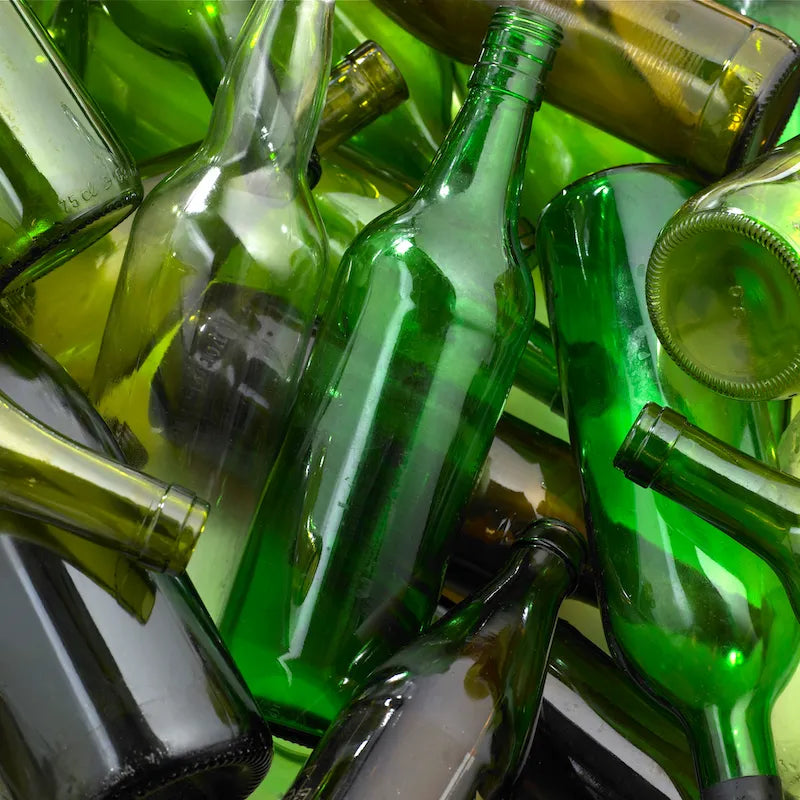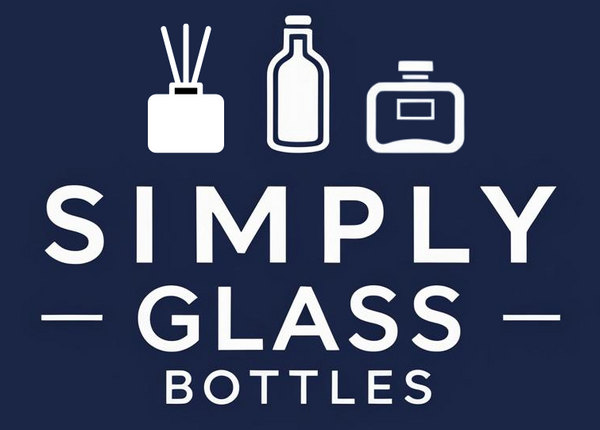
Glass and Its Recyclability
Share
The Structure of Glass
Glass is one of the few materials that can be infinitely recycled without losing its quality or integrity. Unlike many other materials, such as plastic or paper, which degrade after multiple recycling processes, glass can be reused and remade into new glass items repeatedly without any reduction in its strength, clarity, or purity. This remarkable property makes glass one of the most sustainable materials available.

Glass is primarily made from silica (sand), along with other compounds like soda ash and lime to lower the melting point and improve its properties. The key to its recyclability lies in its molecular structure. Glass has a non-crystalline, or amorphous, structure. This means it does not have a repeating, organized atomic structure like metals or plastics. Instead, its atoms are arranged randomly, which is why it is transparent and brittle.
Because of this structure, when glass is melted down and reformed, its basic composition and structure do not change, making it extremely easy to remelt and reshape.
The Glass Recycling Process
Let us break it down!

Collecting Glass Bottles Jars & Containers
When you throw away a glass bottle, jar, or any other item made of glass, it is collected and separated from other waste materials. The most important aspect of glass recycling is that it can be reused without needing to be reprocessed into raw materials (like sand or minerals). It is already made of raw materials, so it can be melted down and reformed directly.
Cleaning Glass
Once the glass is collected, it is cleaned to remove any impurities, labels, or contaminants. This ensures the quality of the final recycled product.
Crushing The Glass
The glass is then crushed into small pieces, known as cullet. Cullet is the key to efficient glass recycling. It can be made up of both post-consumer glass (bottles, jars, etc.) and factory waste (scraps from production). The higher the percentage of cullet used in the production process, the less energy is required to melt the glass. Cullet also helps ensure that the recycled glass retains its quality.

Melting The Glass
The crushed glass, or cullet, is then mixed with a small number of raw materials (such as sand, soda ash, and lime) and melted in a furnace. Since cullet melts at a lower temperature than raw materials, this step requires less energy. It can be melted and reformed into new bottles, containers, or even new products, depending on the need.
Re-Forming Glass
After the glass has been melted, it is formed into new shapes using the same methods as in the original production, whether it is blowing, moulding, or pressing.

Why Glass Can Be Recycled Indefinitely
No Loss of Quality
The key advantage of glass recycling is that its chemical composition remains stable throughout the recycling process. Unlike materials like paper (which loses fibres each time it has recycled) or plastic (which can degrade in quality due to repeated melting and moulding), glass does not break down when it is recycled. The raw materials and the glass structure remain intact, so it can be reused an infinite number of times.
Energy Savings
Using recycled glass reduces the need to extract new raw materials, and it takes less energy to melt cullet than to make new glass from scratch. For example, using 10% recycled glass in the production of new glass can reduce energy consumption by 2–3%. The more cullet used, the less energy is required for melting, and the lower the environmental impact.
Reduction in Emissions
By recycling glass, we can also reduce the need for quarrying raw materials, like silica sand, and reduce the carbon footprint of glass production. Glass recycling results in fewer greenhouse gas emissions compared to manufacturing glass from virgin materials.
Glass and Contamination
One of the biggest advantages of glass is its resistance to contamination. Unlike materials such as plastic or aluminium, which can suffer from contamination and degradation over time, glass stays pure throughout the recycling process. This makes it easier to reuse glass multiple times without compromising the quality of the material.
However, glass needs to be separated from other materials when recycling (such as ceramics, which may not melt properly), but this separation process is typically straightforward.
Why Glass Bottles, Jars & Containers Are Not Always Recycled
Despite its infinite recyclability, not all glass is recycled as efficiently as it could be. There are several factors that can complicate glass recycling:
- Contamination: Glass items mixed with food or other substances can be harder to recycle, although this is less of a problem compared to other materials like plastics or metals.
- Transport and Collection Issues: Glass is heavy and transporting it for recycling can sometimes be inefficient or costly. In areas with less developed recycling infrastructure, this can be a barrier to effective glass recycling.
- Limited Markets: In some regions, there might not be enough demand for recycled glass products, especially if the infrastructure to process the glass is lacking.

The Future of Glass Recycling
Despite these challenges, the recycling of glass is increasing globally as awareness of sustainability grows and as technology improves. More regions are adopting programs that encourage glass recycling, and innovations are constantly being developed to make the process even more efficient.
Some examples include:
- Advanced Sorting Technologies: Technologies like optical sorting systems and AI-powered machines are improving the way glass is separated from other recyclables, increasing efficiency and the purity of recycled glass.
- Glass-to-Energy: Some research is exploring how glass could play a role in energy generation or in the production of eco-friendly materials, potentially using recycled glass for green building projects or in solar panel technology.
- Innovations in Glass Recycling Facilities: Modern glass recycling facilities are being designed to maximize the use of cullet, making the process more energy-efficient and capable of handling higher volumes of recycled glass.
Glass stands out in the world of recycling because it is infinitely recyclable. Its molecular structure, stability during melting, and lack of degradation through repeated cycles make it one of the most sustainable materials we use today. If the infrastructure is in place to collect, sort, and process it, glass can be recycled indefinitely, helping to conserve natural resources, reduce energy consumption, and minimize waste. So next time you reach for a glass bottle, remember that it is not just a recyclable material it is a material that can be recycled forever!
